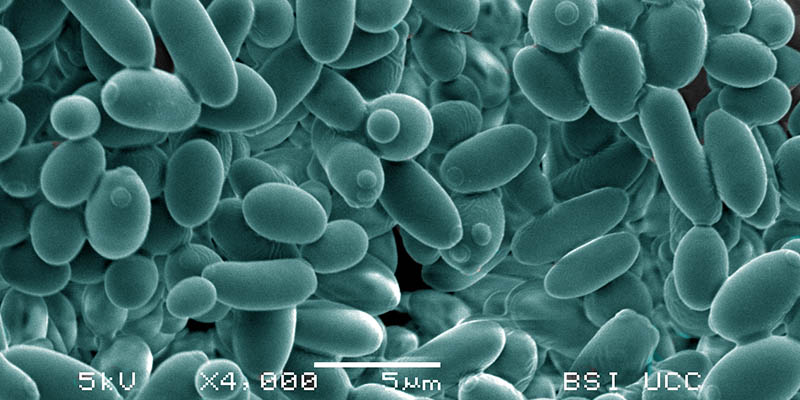Why we have sex to thank for our cheeses

New research reveals that sex by yeast delivered by fruit flies nearly 10,000 years ago is responsible for some of our most interesting cheeses.
K.lactis is a yeast used in the making of unpasteurised cheeses such as the French cheeses Comté and Cantalet and fermented dairy drinks, such as kefir. Because of this, it has the nickname “the milk yeast”. It also produces the enzyme that is used to make lactose-free dairy products for lactose intolerant people. Now, new research by University College Cork (UCC) academics shows that shortly after humans domesticated sheep, goats and cattle, they also domesticated this special yeast.
“We were looking at the genome to study how this yeast can grow in milk and discovered that its ancestor lived in fruit flies and was not able to consume lactose” commented Dr John Morrissey, Microbiologist at UCC. The modern yeast acquired the genes that were needed from another yeast, in a process called ‘gene transfer’. Most likely, this happened when the two yeasts – who normally do not mate – had sex with each other.”
Humans liked the taste of these fermented dairy products and “captured” this new yeast. And we have continued to use it ever since. This process is known as domestication and, after brewing, this is only the second example of human domestication of a yeast. Milk producing animals – cows, sheep, goats – were all domesticated between 8,000-10,000 years ago, and analysis of human tartar shows that humans were consuming milk, most likely as cheese or other fermented products by 5,500 years ago.
This research is important because it shows that early human farmers domesticated microbes as well as animals 10,000 years ago. It illustrates how humans influenced evolution to select microbes with beneficial features. The results are published in Current Biology.
“We can speculate that a fruit fly carrying an ancestor of K. lactis landed in milk and encountered a distantly-related yeast that was already growing in the milk. The two yeasts mated and, in the process, the K. lactis ancestor took the genes for using lactose from its mate. It was then able to grow in the milk and make a fermented product that early humans liked. So they kept some of the fermented milk and used that to start another batch, and so on. And this is how an insect yeast became domesticated by humans” outlined Dr Morrissey.
Dr Morrissey added “with our new genomic technologies, we can engineer microbes with new functions but we now see that humans have been interacting with nature for thousands of years to do exactly the same thing. Genome engineering is not new!”
